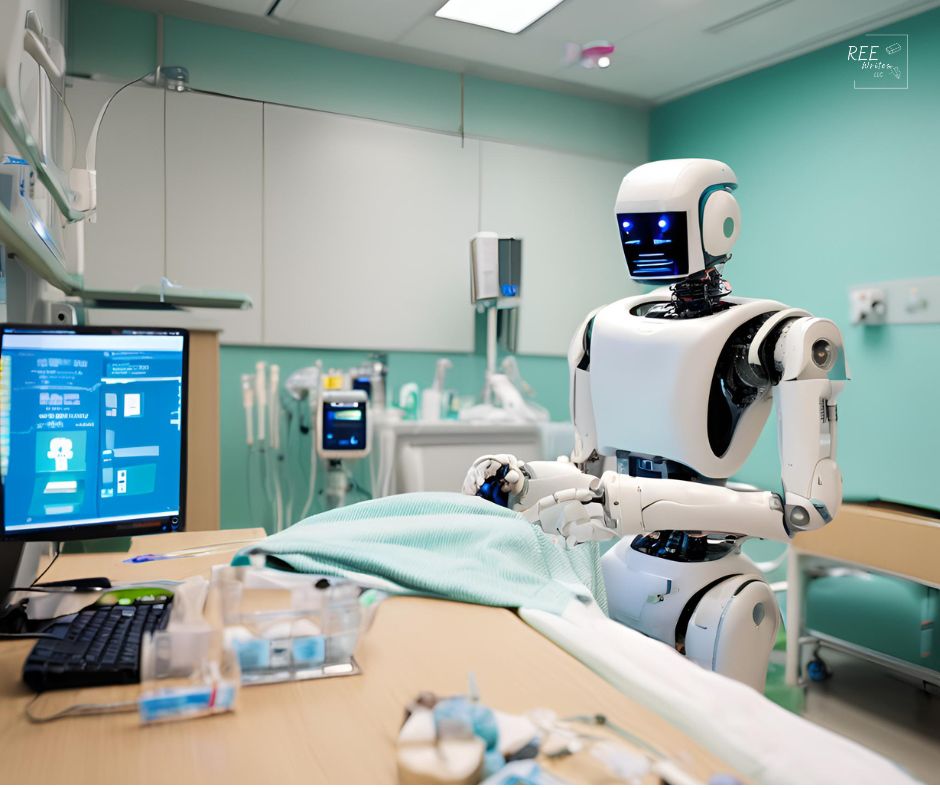The integration of AI in healthcare has changed the way we do patient care, diagnosis, and treatment. Studies show that AI-powered diagnostic tools can achieve an accuracy rate from 80% up to 95% for chest X-rays (Seah, J.C.Y. et al., 2021), and from 81% to 99.7% for early oral cancer detection (Al-Rawi et al., 2023).
This product review describes the leading medical AI tools reshaping the healthcare industry. These cutting-edge solutions leverage advanced technologies like neural networks, machine learning (ML), and quantum computing to enhance clinical decision-making, improve diagnostic accuracy, and streamline healthcare processes.
Contents
1. Viz.ai
Viz.ai is a pioneering AI-powered care coordination platform that has made significant strides in stroke care and other time-sensitive medical conditions. It uses advanced AI algorithms to analyze medical imaging data and facilitate rapid communication for more than 1600 hospitals and healthcare systems.

Key features:
- Automated CT scan analysis for early stroke detection
- Real-time notification system for care team coordination
- Integration with hospital systems for seamless workflow
- Customizable care protocols for various medical conditions
| Pros | Cons |
| Rapid stroke detection and treatment initiation | Requires integration with existing hospital systems |
| Improved patient outcomes through faster care coordination | Initial implementation costs may be high |
| Reduced time to treatment in critical cases | Ongoing training needed for optimal use |
To learn more about Viz.ai or request a demo, visit:
2. DeepScribe
DeepScribe is an AI-powered medical scribe using (ambient clinical intelligence, or ACI) that revolutionizes the way healthcare professionals document patient interactions. They use advanced natural language processing (NLP) and ML algorithms to generate clinical notes from doctor-patient conversations automatically.
Key features:
- Real-time voice-to-text transcription of medical consultations
- Automated generation of structured clinical notes
- Integration with electronic health record (EHR) systems
- Customizable templates for various medical specialties

| Pros | Cons |
| Significant time savings for healthcare providers | May require an initial adjustment period for optimal use |
| Improved accuracy and completeness of medical documentation | Potential privacy concerns with audio recording |
| Reduced administrative burden on physicians | Subscription-based pricing model |
To learn more about DeepScribe or schedule a demo, visit:
3. LumineticsCore™
LumineticsCore™ (formerly IDx-DR) is an FDA-approved AI diagnostic system designed for the early detection of diabetic retinopathy. Developed by Digital Diagnostics (formerly IDx Technologies), this groundbreaking tool uses deep learning (DL) algorithms to analyze retinal images and quickly provide accurate diagnoses.
Key features:
- Automated analysis of retinal images for diabetic retinopathy
- High sensitivity and specificity in detecting referable diabetic retinopathy
- Integration with existing retinal imaging devices
- Immediate results for point-of-care decision making

| Pros | Cons |
| Enables early detection and treatment of diabetic retinopathy | Limited to diabetic retinopathy screening |
| Increases accessibility of screening in primary care settings | Requires specific retinal imaging equipment |
| Reduces burden on ophthalmologists for routine screenings | May not detect other eye conditions |
To learn more about LumineticsCore™ or inquire about implementation, visit:
4. IBM Watson for Oncology
IBM Watson for Oncology is a cognitive computing system that leverages AI and ML for evidence-based treatment decision support. This powerful tool analyzes large amounts of medical literature, clinical trials, and patient data to provide personalized treatment recommendations.
Key features:
- Analysis of structured and unstructured medical data
- Evidence-based treatment recommendations
- Integration of patient-specific factors in decision-making
- Continuous learning from new medical research and clinical outcomes
| Pros | Cons |
| Access to up-to-date, evidence-based treatment options | Requires ongoing maintenance and updates |
| Improved consistency in cancer care across institutions | High implementation and subscription costs |
| Supports personalized medicine approaches | Potential to over-rely on AI recommendations |
To learn more about IBM Watson or request information, visit:
5. Tempus Radiology
Tempus Radiology, part of Tempus AI (formerly Arterys Cardio AI) is a cloud-based AI medical imaging platform that enhances cardiac MRI analysis with AI. It assists radiologists and cardiologists to quickly and accurately assess heart function and diagnose cardiovascular conditions.

Key features:
- Automated segmentation and quantification of cardiac structures
- Rapid analysis of cardiac function and blood flow
- Cloud-based platform for seamless collaboration
- Integration with existing picture archiving and communication system (PACS) and electronic medical record (EMR) systems
| Pros | Cons |
| Significantly reduces time for cardiac MRI analysis | Requires high-quality MRI images for optimal results |
| Improves consistency and accuracy of measurements | May require additional training for optimal use |
| Facilitates remote collaboration among healthcare providers | Subscription-based pricing model |
To learn more about Tempus Radiology or request a demo, visit:
6. PathAI
PathAI is a cutting-edge AI platform designed to spot unusual patterns in tissue samples, helping clinicians diagnose diseases faster and more accurately.
Key features:
- Automated tissue analysis and anomaly detection
- Integration with digital pathology workflows
- Continuous learning from expert pathologist feedback
- Support for various types of cancer and other diseases

| Pros | Cons |
| Improves diagnostic accuracy and consistency | Requires digital pathology infrastructure |
| Reduces turnaround time for pathology results | Initial implementation costs may be high |
| Facilitates collaboration among pathologists | Ongoing training needed for optimal use |
To learn more about PathAI or inquire about partnerships, visit:
7. Nanox Vision
Nanox Vision (formerly Zebra Medical Vision), offers a comprehensive suite of AI-powered medical imaging solutions that assist radiologists in detecting and diagnosing various conditions. Their tools analyze CT scans, X-rays, and MRIs to identify potential health issues across multiple specialties.
Key features:
- AI-assisted analysis of various imaging modalities
- Automated detection of bone health, cardiovascular, and pulmonary conditions
- Integration with existing PACS and workflow systems
- Continuous updates with new AI models for emerging conditions

| Pros | Cons |
| Improves early detection of various medical conditions | Requires integration with existing imaging systems |
| Reduces radiologist workload and improves efficiency | May require ongoing subscription fees |
| Supports population health management initiatives | Potential for over-reliance on AI-generated findings |
To learn more about Nanox Vision or request a demo, visit:
8. Corti
Corti is an AI-powered platform designed to help emergency dispatchers and healthcare providers identify critical conditions during emergency calls. Using advanced NLP and ML algorithms, Corti can automate documentation and analyze conversations in real-time to provide actionable insights and decision support.
Key features:
- Real-time analysis of emergency call audio
- Automated detection of critical conditions like cardiac arrest
- Integration with emergency dispatch systems
- Continuous learning from new cases and outcomes
| Pros | Cons |
| Improves response times for critical emergencies | Requires integration with existing dispatch systems |
| Enhances decision-making support for dispatchers | May raise privacy concerns due to call recording |
| Provides valuable data for quality improvement | Ongoing training needed for optimal performance |
To learn more about Corti or schedule a demo, visit:
9. Benevolent AI
Benevolent AI is a leading AI company using ML and DL to accelerate drug discovery and development. Their platform analyzes vast amounts of biomedical data to identify potential drug candidates and predict their safety and effectiveness.
Key features:
- AI-driven analysis of biomedical literature and data
- Identification of novel drug targets and compounds
- Prediction of drug effectiveness and potential side effects
- Continuous learning from new research and clinical data
| Pros | Cons |
| Accelerates drug discovery process | High initial investment required |
| Identifies potential treatments for rare diseases | Complex implementation process |
| Reduces costs associated with traditional drug development | Requires ongoing collaboration with domain experts |
To learn more about Benevolent AI or explore partnership opportunities, visit:
10. Qure.ai
Qure.ai is an AI-powered medical imaging company that specializes in developing DL solutions for radiology. Their tools assist healthcare providers in analyzing X-rays, CT scans, and MRIs to detect various conditions and streamline the diagnostic process.
Key features:
- AI-assisted analysis of chest X-rays and head CT scans
- Automated detection of lung abnormalities and brain injuries
- Integration with existing radiology workflows and PACS
- Continuous updates with new AI models for emerging conditions
| Pros | Cons |
| Improves early detection of critical conditions | Requires integration with existing imaging systems |
| Reduces radiologist workload and reporting time | May require ongoing subscription fees |
| Supports teleradiology and remote diagnosis | Potential for over-reliance on AI-generated findings |
To learn more about Qure.ai or request a demo, visit:
Conclusion
These top medical AI software and apps enhance diagnostic accuracy, streamline workflows, and improve patient outcomes. As AI continues to evolve, we can expect even more innovative solutions to emerge.
The best AI diagnostic tools offer healthcare providers powerful allies in their quest to deliver top-notch care. Healthcare providers and institutions that embrace these cutting-edge technologies will be well-positioned to deliver superior care and stay at the forefront of medical innovation.
References
Al-Rawi, N., Sultan, A., Rajai, B., Shuaeeb, H., Alnajjar, M., Alketbi, M., Mohammad, Y., Shetty, S. R., & Mashrah, M. A. (2022). The Effectiveness of Artificial Intelligence in Detection of Oral Cancer. International Dental Journal, 72(4), 436-447. https://doi.org/10.1016/j.identj.2022.03.001
Seah, J.C.Y. et al. (2021). Effect of a comprehensive deep-learning model on the accuracy of chest x-ray interpretation by radiologists: a retrospective, multireader multicase study. Lancet Digital Health. 3(8),e496-e506. doi.org/10.1016/S2589-7500(21)00106-0

















